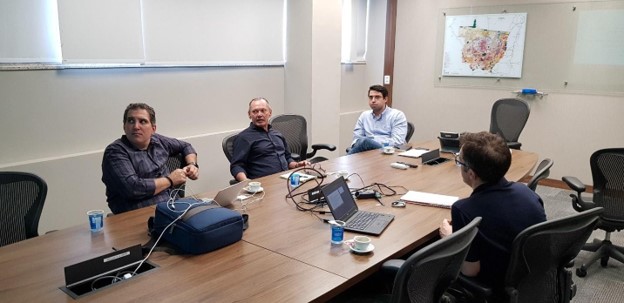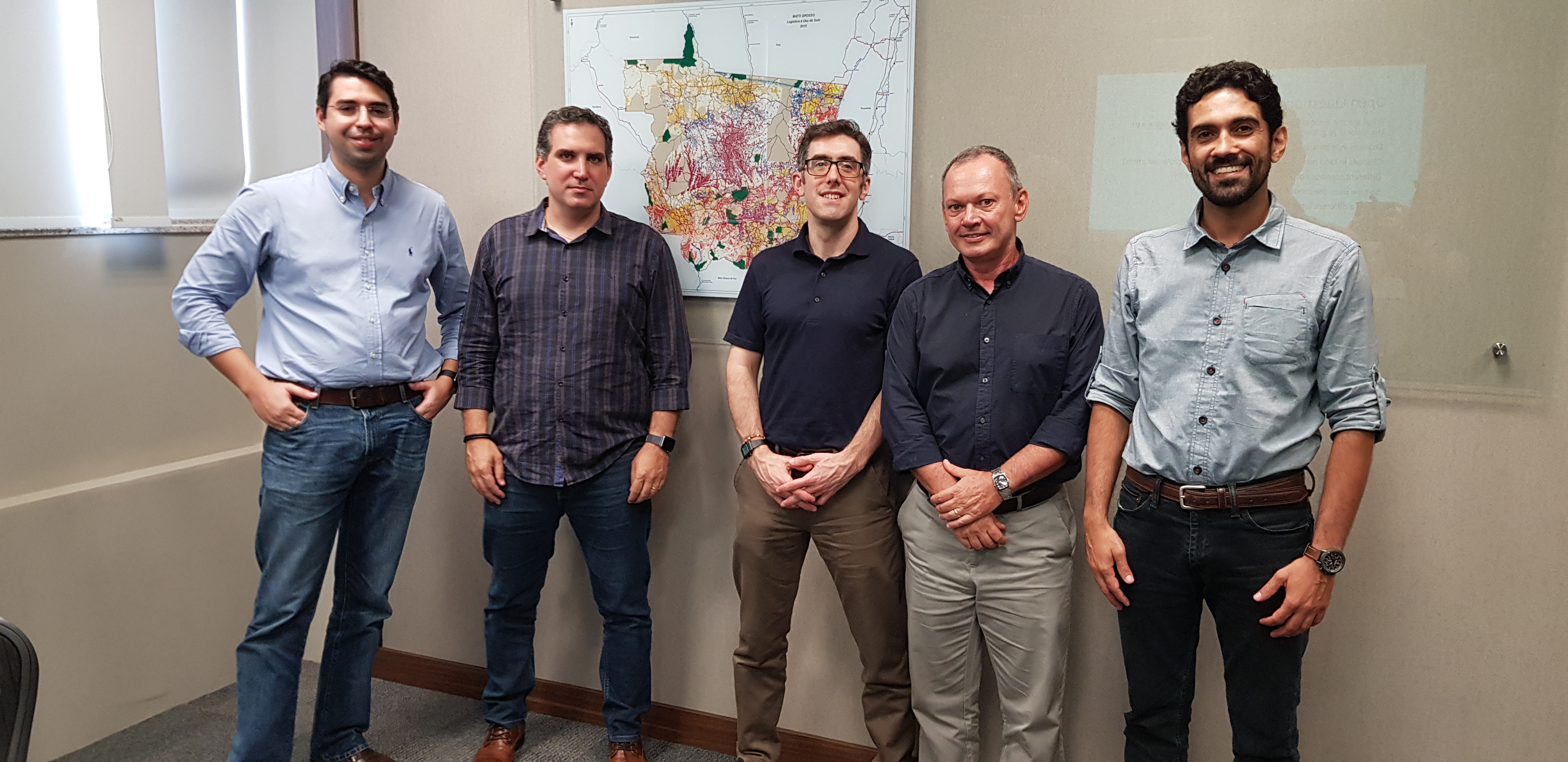04/02 – Meeting at Embrapa Agricultural Informatics in Campinas, SP
Participants: Mateus Batistella (Unicamp and Embrapa), James D A Millington (King’s College), Ramon F B da Silva (Unicamp), Daniel Victoria (Embrapa), Geraldo Martha (Embrapa), Luis Gustavo Barioni (Embrapa).
Specific features of the model were discussed, as the agent’s agency and how works the inertia in the model to represent land change patterns. How economics are represented in the model? Allocation is not based on effective cost. How far will it be from cities? The presence of markets may drive price and demand in local markets. Demand in internal markets and foreign markets are different and may change in the future. The model should consider changes in internal markets as it can drive less grain for international markets – What if Brazil starts to produce more hogs and drive more internal demand for soybean? Maize must be considered as second crop in specific regions to improve the model representation.
Farmers tend to change over time. Producers in the past asked Embrapa to provide short soybean cycle varieties to produce maize as a second crop. Lack of rain in the beginning of the soy season and lack of rain in the end of season of soy would jeopardize the double crop system. Longer dry seasons will also affect pasture productivity.
Utility can be optimized as cost effective (in dollars). If things change would change your perceptions in the model? If double crop is not possible, what would happen to the producers? Farmers change – they will move.
Calibration may be better in states like Mato Grosso and Paraná, leaders in grain production.
Also, some disaggregation could improve the model – climate, state, regions. Desegregating time and space. But is it going to be more accurate? How to disaggregate?
In terms of quantitative modeling, we may also consider reclassifying grassland to nature instead of pasture. Also, ‘’other agriculture’ should be reclassifies as ‘pasture’, in Mapbiomas. Levels of risk to produce a second crop will be very important. But the average climate never happens. Producers are looking to the production risk – than they must understand climate variability and change. Creating risk levels for climate conditions may allow simulation in different situations. Dryness indices could be used as proxies for risk.
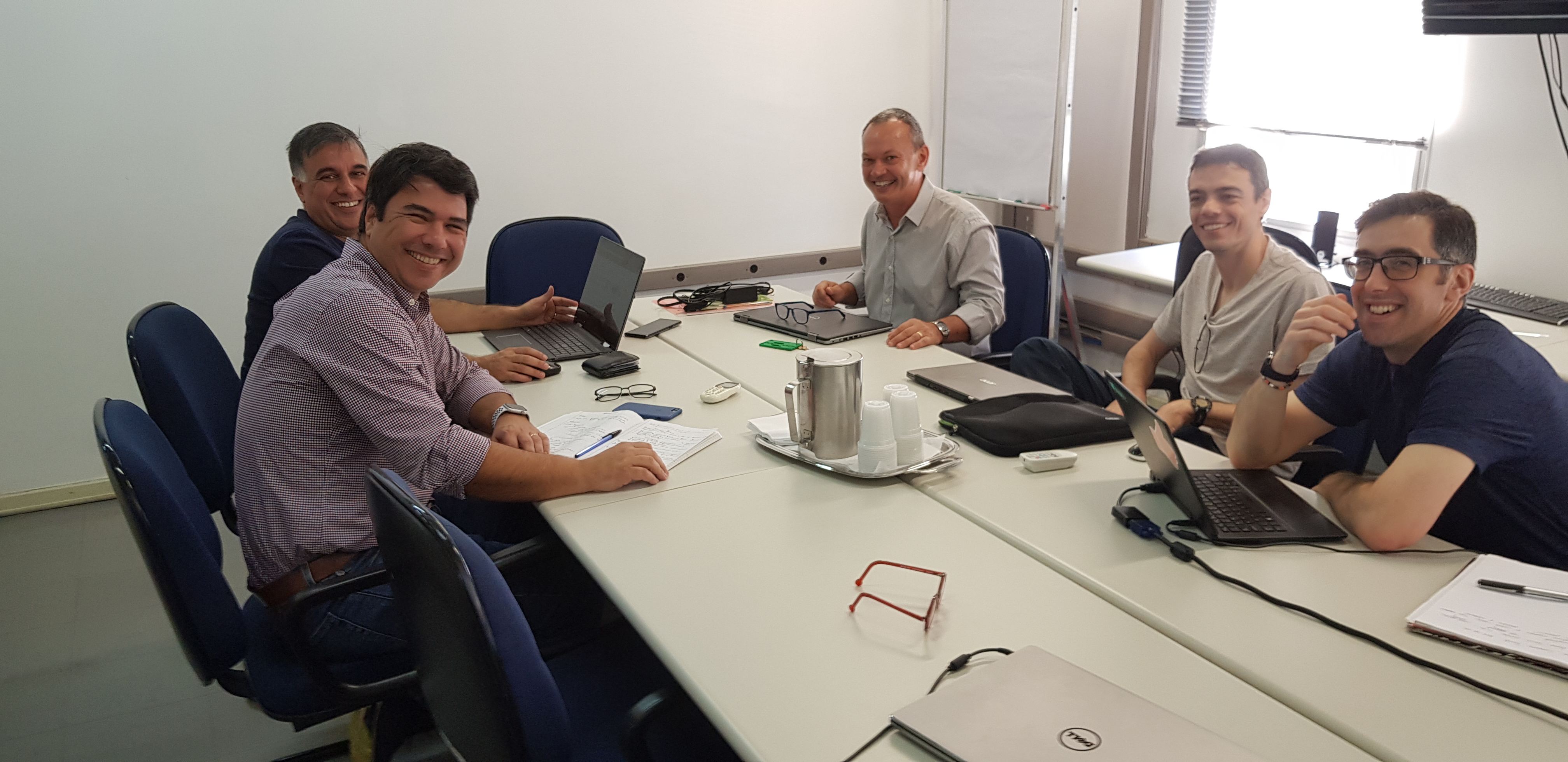
04/03 – Meeting at Embrapa Headquarters in Brasília, DF
Participants: Mateus Batistella (Unicamp and Embrapa), James D A Millington (King’s College), Ramon F B da Silva (Unicamp), Geraldo da Silva e Souza (Embrapa), Eliane Gonçalves Gomes (Embrapa).
We had a productive meeting at Embrapa in Brasília. Embrapa has participated of the team led by the Ministry of Agriculture, Livestock and Supply to produce agricultural projections for the coming years. According to experts, technology explains 60% of the productivity; labor 20%, and land less than 20%, approximately.
The main challenge in these projections is that we see no straight lines; mainly for the first 2-3 years. The extensive use of microdata from IBGE could help.
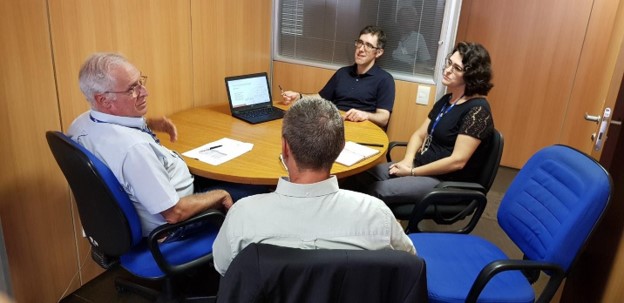
04/04 – Meeting at Aprosoja MT in Cuiabá, MT
Participants: Mateus Batistella (Unicamp and Embrapa), James D A Millington (King’s College), Ramon F B da Silva (Unicamp), Fernando Cadore (Aprosoja), Lucas Beber (Aprosoja).
Aprosoja is the main association of soybean producers in Brazil. In a meeting with board members of one of its main chapters, suggestions were made to improve he model:
– Infrastructure capital: try to add and/or subtract roads (planned or partially used) to check changes in the capital through time.
– Add railroads: actual and planned.
– Land tenure: renting land is a common practice and adds complexity to the system.
– Technology adoption: more impact for those who have less.
– Maize ethanol (to supply northern states) could affect double cropping (maize+maize, maize+soy, maize+pasture w/suplements).
– Policy changes: governance capital?
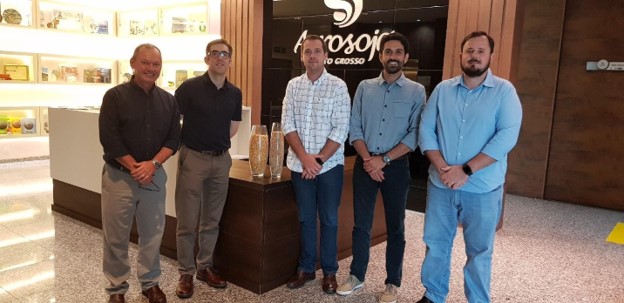
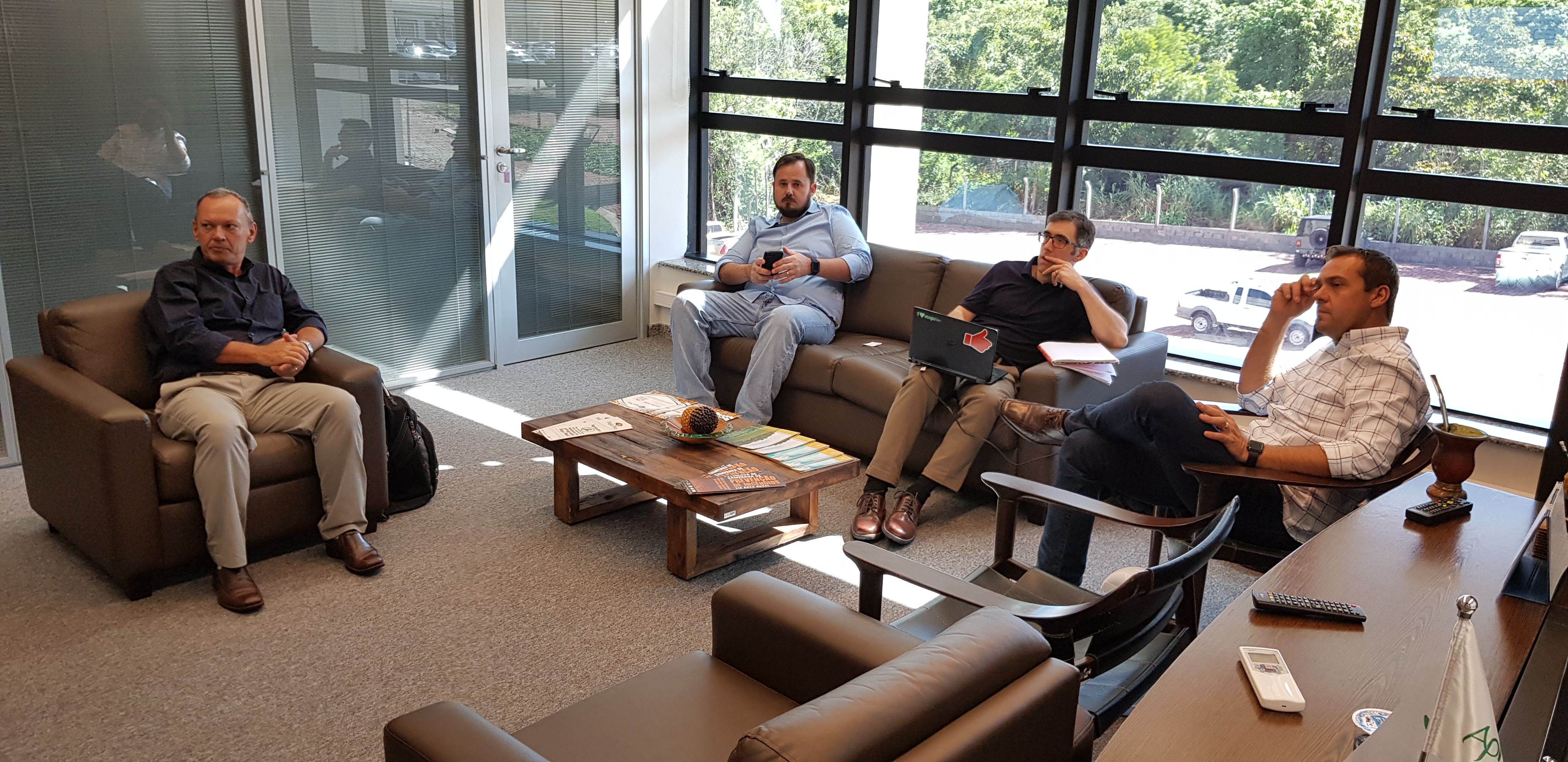
04/04 – Meeting at SENAR and IMEA in Cuiabá, MT
Participants: Mateus Batistella (Unicamp and Embrapa), James D A Millington (King’s College), Ramon F B da Silva (Unicamp), Otávio Celidônio (SENAR), Daniel Latorraca (IMEA)
SENAR and IMEA are key stakeholders for agribusiness in Mato Grosso, Brazil. During the project, we interacted with them several times and a manuscript with their partnership was submittted for publication. Among other suggestions, we highlight:
– IMEA produces Origin-Destination data for crops each month – how might we use these data o improve the model?
– Railroad: Ferrogrão (MT) and Norte-Sul (TO). Implementation vs operation (cost).
– Crops in Indigenous Lands (15 Kha in Parecis).
– Otavio’s article on frontier accessibility.
– Add climate data 2015-2018.
– Layer for storage (silos).
